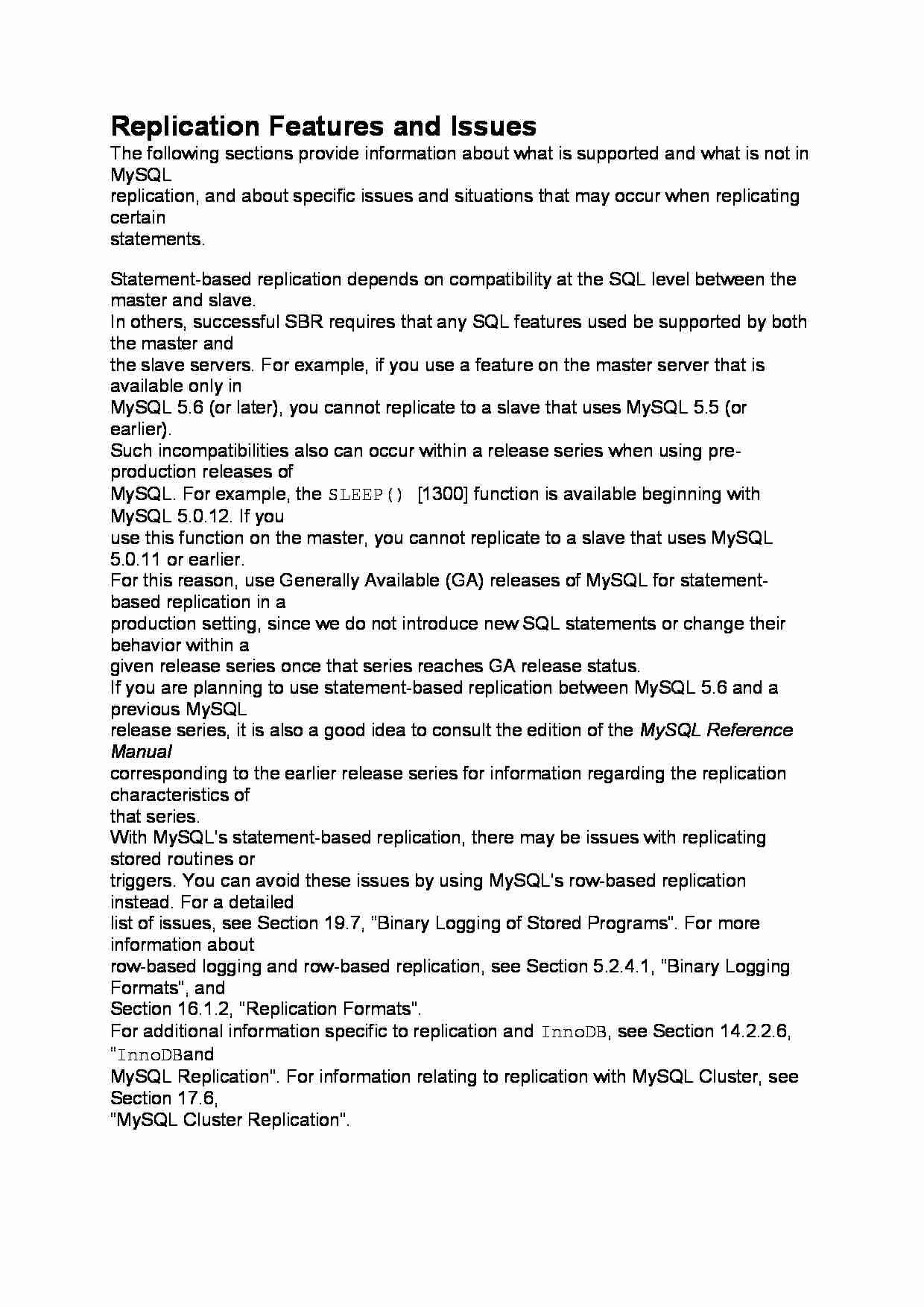
Replication Features and Issues
The following sections provide information about what is supported and what is not in MySQL
replication, and about specific issues and situations that may occur when replicating certain
statements.
Statement-based replication depends on compatibility at the SQL level between the master and slave.
In others, successful SBR requires that any SQL features used be supported by both the master and
the slave servers. For example, if you use a feature on the master server that is available only in
MySQL 5.6 (or later), you cannot replicate to a slave that uses MySQL 5.5 (or earlier).
Such incompatibilities also can occur within a release series when using pre-production releases of
MySQL. For example, the SLEEP() [1300] function is available beginning with MySQL 5.0.12. If you
use this function on the master, you cannot replicate to a slave that uses MySQL 5.0.11 or earlier.
For this reason, use Generally Available (GA) releases of MySQL for statement-based replication in a
production setting, since we do not introduce new SQL statements or change their behavior within a
given release series once that series reaches GA release status.
If you are planning to use statement-based replication between MySQL 5.6 and a previous MySQL
release series, it is also a good idea to consult the edition of the MySQL Reference Manual
corresponding to the earlier release series for information regarding the replication characteristics of
that series.
With MySQL's statement-based replication, there may be issues with replicating stored routines or
triggers. You can avoid these issues by using MySQL's row-based replication instead. For a detailed
list of issues, see Section 19.7, “Binary Logging of Stored Programs”. For more information about
row-based logging and row-based replication, see Section 5.2.4.1, “Binary Logging Formats”, and
Section 16.1.2, “Replication Formats”.
For additional information specific to replication and InnoDB, see Section 14.2.2.6, “InnoDB and
MySQL Replication”. For information relating to replication with MySQL Cluster, see Section 17.6,
“MySQL Cluster Replication”.
... zobacz całą notatkę



Komentarze użytkowników (0)